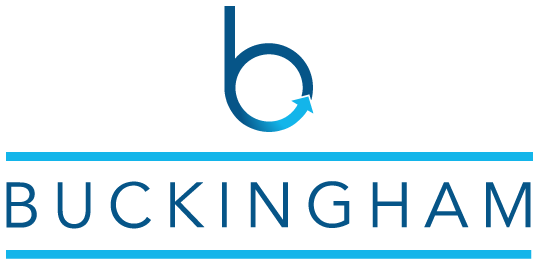QUALIFIED OPPORTUNITY ZONES INVESTMENTS: Maximize tax benefits from investing in real estate in low- income communities. Ohio provides significant opportunities and incentives for these investments.
Published by Guggenheim Commercial Real Estate Group
Written by Richard B. Fry
 The buzz surrounding the Tax Cuts and Jobs Act of 2017 (the “Tax Reform Act”), and its effect on the real estate industry in particular, has been intense. The Tax Reform Act has been touted as the biggest tax cuts in American history. Predictably, our clients have been asking how they can get their piece of the pie by taking advantage of the new federal tax landscape. One powerful economic development tool available to a wide array of investors and businesses is the new Qualified Opportunity Zone (“QOZ”) program, which provides substantial tax benefits for investments in property located in certified low-income communities.
The buzz surrounding the Tax Cuts and Jobs Act of 2017 (the “Tax Reform Act”), and its effect on the real estate industry in particular, has been intense. The Tax Reform Act has been touted as the biggest tax cuts in American history. Predictably, our clients have been asking how they can get their piece of the pie by taking advantage of the new federal tax landscape. One powerful economic development tool available to a wide array of investors and businesses is the new Qualified Opportunity Zone (“QOZ”) program, which provides substantial tax benefits for investments in property located in certified low-income communities.
Intended to spur economic development and job creation in distressed communities, the QOZ program is an exciting and new opportunity for investors seeking to make long-term, tax advantaged investments in low income communities. Investments in QOZs are eligible for three core benefits – first, deferral of capital gains from the sale of any type of property (including non-real estate) that are reinvested into QOZ property; second, abatement of tax on up to 15% of the deferred capital gains for investments held for 7 years; and, finally, complete avoidance of tax on the investment’s appreciation if held for at least 10 years.
Are there Qualified Opportunity Zones in Ohio?
Yes, on April 18, 2018, the Treasury Department certified 320 Ohio tracts nominated by Governor Kasich as QOZs. Many of these zones are located in Northeast Ohio – 70 in Cuyahoga County, 22 in Summit County, 11 in Lorain County, 3 in Lake County, and 2 in Medina County. These QOZs are located in several popular development areas in Northeast Ohio, including downtown Cleveland, the Flats, parts of Ohio City, downtown Akron, the west side of Medina, and areas of Cuyahoga Falls, among others.
To determine if a particular area is qualified, visit the Ohio Development Service Agency’s website which has a map of the QOZs.
How does the QOZ program work?
The QOZ tax benefits are available for investments in a Qualified Opportunity Fund (“QO Fund”). A QO Fund is the vehicle for obtaining the QOZ tax benefits, which must hold at least 90% of its assets in QOZ property at the time of the investment and throughout the applicable holding period. The QO Fund may be organized as a corporation or partnership. IRS guidance provides that eligible taxpayers can self- certify as a QO Fund, meaning no prior approval or action from the IRS is required. A self-certification form will be made available in summer 2018, which taxpayers will need to attach to their federal income tax returns.
We anticipate two forms of QOZ investments becoming popular. First, what we’ll call pooled investments – where an organization, management company, or developer (“Manager”) seeks investments in a QO Fund from many passive investors. The Manager would be responsible for properly organizing the QO Fund, creating the plan for the acquisition or development of the QOZ property, and actively manage the property thereafter. The other investors would not be actively involved in the management of the QOZ property, but simply invest in the QO Fund and reap the tax benefits.
Second, the QOZ program is also available to closely-held investments. This could include a few partners or family members who want to invest in, and actively manage, an apartment building, commercial real estate, or small business located in a QOZ. It could also include a single investor that wishes to invest in QOZ property.
The possible structures to obtain the QOZ program benefits are very broad. Further, the program is not only available for real property investments, but can also include the acquisition of businesses located in QOZs. However, to take full advantage of the QOZ program benefits, it is critical for the investor to plan for and properly organize the QO Fund before the investment is made.
Maximizing the tax deferral and abatement incentives for QOZ investments.
As mentioned above, the QOZ program provides three distinct benefits, with each successive benefit building on those before it.
First, the QOZ program allows an investor to defer tax due on the short-term or long-term capital gains recognized from the disposition of property (including real property, stock, etc.) if the capital gains from the disposition are reinvested within 180 days in a QO Fund. Indeed, the QOZ program can provide a more attractive capital gain deferral mechanism than Section 1031 like-kind exchanges due to the second and third benefit discussed below. Further, the QOZ program only requires the capital gains be reinvested. The principal of the original investment can be reinvested as the investor sees fit, including, as part of a separate investment or project.
Second, if the investment in the QO Fund is maintained for 5 years, the taxpayer will avoid tax on 10% of the original gain that had been deferred. If the investment is held for 7 years, the taxpayer receives an additional 5% tax abatement on the deferred gain – totaling a maximum 15% tax abatement. This is accomplished through a step-up in the investor’s tax basis in the QO Fund when these milestones are reached. Tax will ultimately be owed on the deferred gain on the earlier of the date the investment in the QO Fund is disposed of or on December 31, 2026 (even if the investment is held past this date). Accordingly, to obtain the maximum 15% avoidance on the deferred gain, the investment in the QO Fund must be made by the end of 2019 – otherwise, the investment cannot be held for 7 years before the tax recognition event occurs at the end of 2026.
Finally, if the QO Funds investment is maintained for 10 years, the investor will not be taxed on any post-acquisition gains from his/her investment. Upon disposition of these long-term investments, the taxpayer’s basis in the QO Fund is increased to the fair market value of the investment. Therefore, all appreciation in the investment would be tax-free.
Open questions remain about the details of the QOZ program, as we are still waiting for the IRS to issue regulations providing taxpayers with guidance concerning this program, as is the case with many new provisions from the Tax Reform Act. Nonetheless, potential QOZ investors should immediately start preparing to take advantage of this exciting opportunity. For those who have already identified real estate to be acquired, it is well worth the time to check if the property is located in a qualified opportunity zone.
Richard B. Fry, JD, MTax is a partner at Buckingham, Doolittle & Burroughs, LLC in Akron, Ohio. Rich is a member of the firm’s Business and Real Estate Practice Groups, and currently serves as the Chair of the Ohio State Bar Association’s Taxation Committee. He can be reached at rfry@bdblaw.com or 330-258-6423. Alexander C. Campbell, JD is an associate in Buckingham’s Cleveland office and a member of the firm’s Business and Non-Profit Practice Groups. Alex has significant experience advising both for-profit and non-profit clients in real estate, tax credit finance, and other business transactions. He can be reached at acampbell@bdblaw.com or 216-615-7307.
Download the PDF version.


